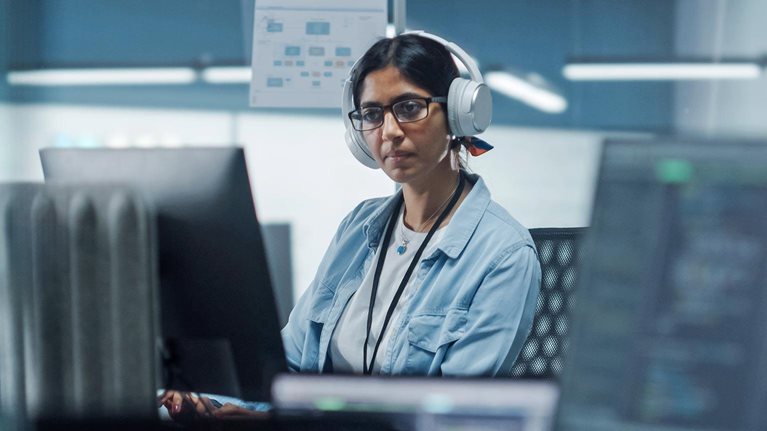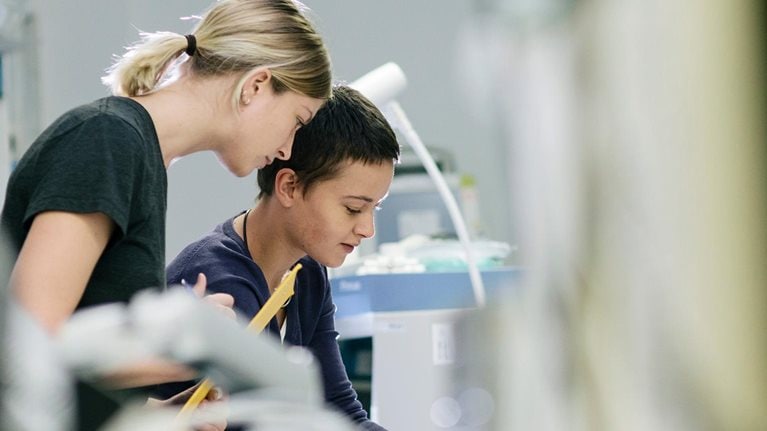Inside every machine are countless essential components, and the makers of those components contribute to carbon emissions for the life of those technologies. In fact, given Scope 3 emissions in their supply chains, manufacturing, transport, and construction are the most emission-heavy sectors in the world.
Danfoss is one organization working to change that. One of the largest producers of component parts for heating and cooling, drives, and power solutions, the Nordic company’s net-zero transformation is helping manufacturers around the world green their supply chains.

Would you like to learn more about our Sustainability Practice?
The opportunity
With more than 42,000 employees across the world, Danfoss produces thousands of components each year. Used across manufacturing industries, these components find their way into countless technologies essential to keeping everyday life moving for people the world over.
The company, says CEO Kim Fausing, has an opportunity to make a powerful environmental impact. “We’re at a critical juncture in addressing climate change. Everything Danfoss does is focused on increasing machine productivity, reducing emissions, lowering energy consumption, and enabling electrification,” says Kim. “We want to be the best-in-class preferred partner for customers looking to decarbonize and are taking our own medicine—continuously making the way we run our business more energy efficient.”
We’re at a critical juncture in addressing climate change. Everything Danfoss does is focused on increasing machine productivity, reducing emissions, lowering energy consumption, and enabling electrification.
Kim and Jürgen Fischer, president of Danfoss Climate Solutions began having high-level discussions with McKinsey in the summer of 2021 about how best to engage customers -- makers of equipment across these emission-heavy sectors who use Danfoss’s component parts – to become their preferred partner in decarbonization.
The question at the center of those conversations: What should Danfoss’s decarbonization target be and how could the company make a realistic plan to meet it?
Setting a course for net zero
Danfoss’s Climate Solutions business is responsible for producing heating and cooling machinery components. Teaming up with McKinsey sustainability experts, Danfoss looked for ways to decarbonize various aspects of it.
They learned that while the highest carbon emissions come from the use of products across their entire lifecycle, the second largest source of emissions lies in the materials and construction processes. Product redesign and an alternative supply chain offered two possible ways forward.
“Material decarbonization is the next frontier for advanced industries,” says McKinsey partner Jacob Staun. “We helped Danfoss map out the complexity of their supply chains to identify sources of emission and design solutions with a positive impact on cost and carbon.”
Innovating with technology
To facilitate and accelerate the process, Danfoss, with the help of McKinsey, developed a digital platform that assesses carbon emissions along the entire supply chain of each product. This tool, called Zero Carbon Product, from McKinsey’s Catalyst Zero solution, mapped the company’s bill of materials for each product against a library of around 600 decarbonization levers spanning 100 material categories.
The result was a cost-optimized decarbonization roadmap showing, for example, alternative suppliers for certain materials like iron, steel, and aluminum, that could help Danfoss create low-carbon versions of existing products still at low cost.
Partnering for success
The next step in the process was to test the roadmap’s likelihood of success.
Pilot journeys were created for five products from Danfoss’s Climate Solutions portfolio. An assessment of these initial five products found that for a minimal increase in costs, emissions from materials purchased to make each product could be reduced by as much as 95 percent. Here was a clear path to eliminating most emissions at low cost.
The program pinpointed exactly where reductions could be made and how – an assessment that took hours rather than days with traditional methods – thereby creating an opportunity to scale the solution across Danfoss’s large product line.
At the same time, McKinsey conducted customer interviews to better understand the price elasticity of low-carbon products. This would help Danfoss determine which suppliers to team up with to pilot some of these new sustainable product line solutions.
Building capabilities
The next question was one of scale. Danfoss’s entire portfolio comprises hundreds of product lines, each with anywhere from tens to hundreds of product variances. While Danfoss has around 5,000 suppliers, McKinsey’s analysis found that around half of total embodied emissions came from just 50 of those suppliers. This created a shortlist to focus on to have the greatest impact.
Danfoss worked with McKinsey to build new capabilities, including embedding carbon assessments into product engineering and retraining employees to add decarbonization to their procurement strategy.
“Building lower carbon products requires an entirely new way of working, one that requires new skill sets and embedding carbon reduction into every business process including procurement, product design, and go-to-market,” says McKinsey associate partner Jessica Fan.
Decarbonizing at scale
This has helped Danfoss achieve the goal of assessing its entire Climate Solutions product portfolio by the end of 2022 to create a clear product engineering roadmap moving forward. And it’s become part of a broader set of Science Based Targets: by 2030, Danfoss aims to reduce all direct and indirect emissions from purchased energy by 46.2 percent; reduce emissions across the value chain by 15 percent; and become carbon neutral across its operations.
By the end of 2021 into early 2022, training personnel at Danfoss in how to move this decarbonization process forward became a priority. McKinsey deployed a train-the-trainer model, arming around 20 key Danfoss employees with the skills and tools needed to train employees across the organization to carry out this decarbonization mission.
Achieving carbon neutrality through energy efficiency and electrification is not a transition that happens overnight or by chance.
This train-the-trainer process involved identifying key people, making sure they were included in the initial five pilots, then conducting trainings and workshops so they could own the rollout of this new tool.
The next step involved taking a closer look at the overall product launch strategy. While the company started with the Climate Solutions segment of its business, the goal is to complete this same process across its other two business units: Power Solutions, which makes up half of the overall business and Power Electronics and Drives, which accounts for another 30 percent. Danfoss is currently working with McKinsey in the proof-of-concept stage for its Power Electronics and Drives business as part of a two-and-a-half-year plan to roll out low carbon products across the entirety of the business.
“Achieving carbon neutrality through energy efficiency and electrification is not a transition that happens overnight or by chance,” says Kim. “Danfoss is fully committed to both having a positive climate impact and also helping our customers become more climate-friendly through their use of our products and solutions.”


